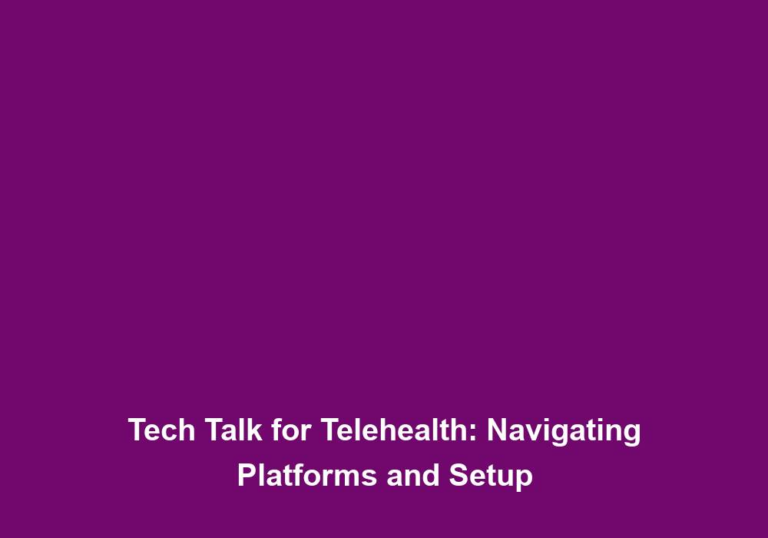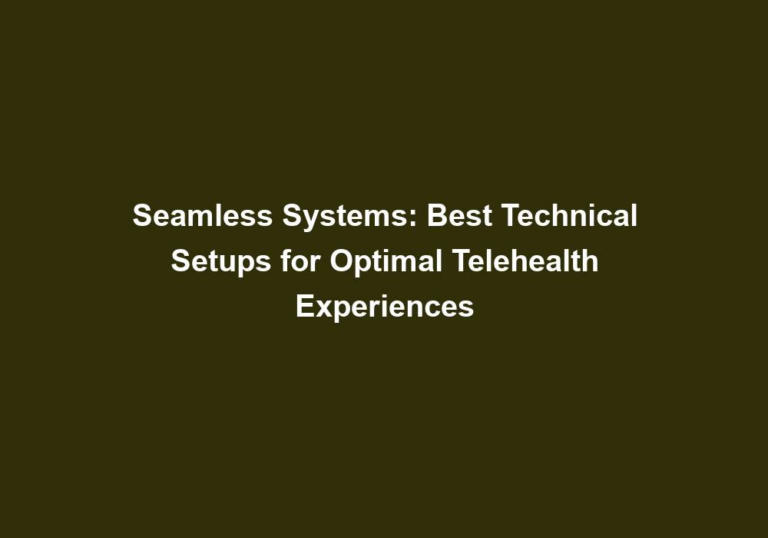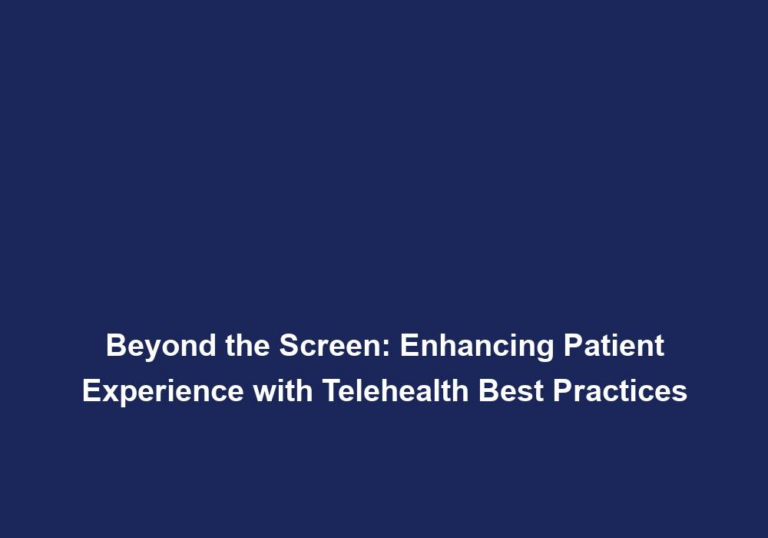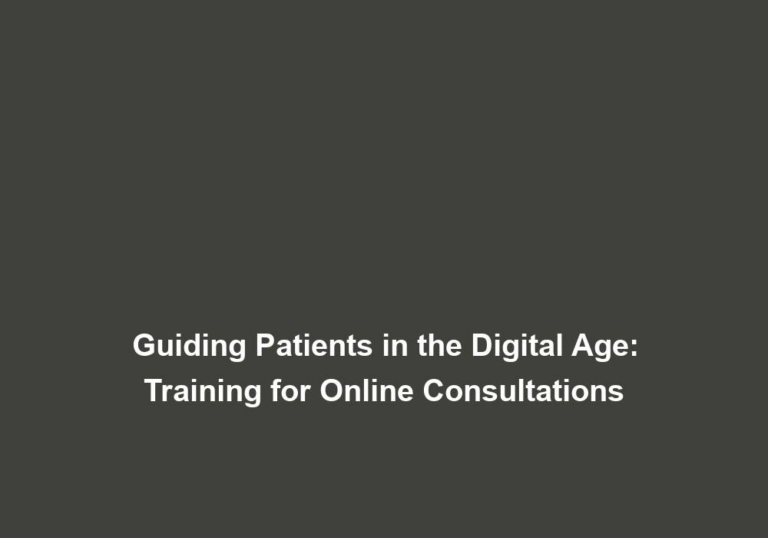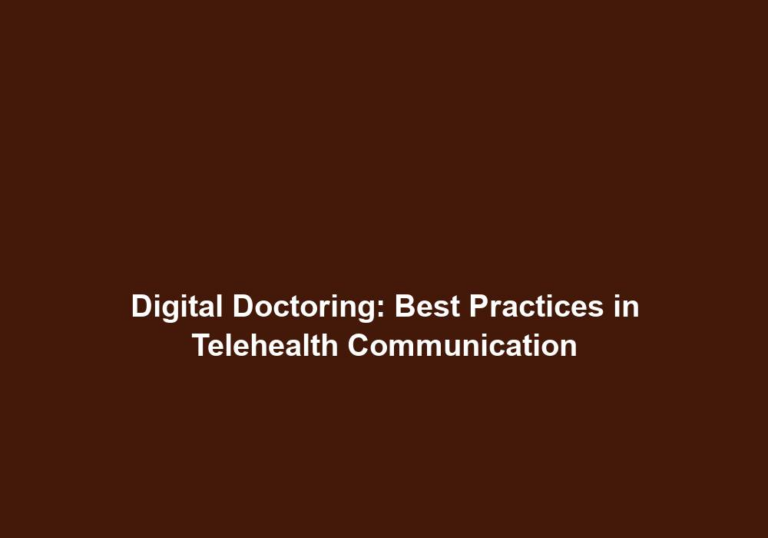E-Clinic Etiquettes: Preparing Patients for Virtual Visits
In the era of advanced technology, virtual visits or telemedicine have gained significant popularity among healthcare providers and patients. The convenience and accessibility offered by virtual visits make it an attractive option for individuals seeking medical advice and assistance from the comfort of their homes. As a result, it is important for both patients and healthcare professionals to understand and follow certain etiquettes to ensure a smooth and effective virtual visit. This article focuses on providing guidance to patients on how to prepare for virtual visits and optimize their experience.
Understanding the Benefits of Virtual Visits
Before delving into the preparations for a virtual visit, it is essential to grasp the advantages it offers. Virtual visits provide numerous benefits for patients, such as:
-
Convenience: Virtual visits eliminate the need for commuting, waiting in long queues, and sitting in crowded waiting rooms. Patients can consult with healthcare professionals from the comfort of their own homes, saving time and effort.
-
Accessibility: Virtual visits break down geographical barriers, enabling patients to consult with specialists from different locations. This is especially beneficial for individuals residing in remote areas or those with limited access to specialized medical care.
-
Safety: In situations like pandemics or contagious diseases, virtual visits minimize the risk of exposure to infections, as patients can receive medical advice without physically visiting a clinic or hospital.
Preparing for a Virtual Visit
To make the most out of a virtual visit, patients should consider the following preparations:
1. Technical Setup
Ensuring a smooth and uninterrupted virtual visit begins with the right technical setup. Here are a few key points to consider:
-
Internet Connection: A stable and reliable internet connection is necessary for a glitch-free virtual visit. Check your connection strength and consider using a wired connection or sitting in an area with good Wi-Fi signal. A strong internet connection will help avoid disruptions or delays during the virtual consultation.
-
Device: Choose a device with a larger screen, such as a laptop or tablet, to enhance visibility during the visit. Ensure that the device is fully charged or connected to a power source. This will prevent any unexpected shutdowns or battery drainage during the consultation.
-
Camera and Microphone: Test the camera and microphone of your device to ensure they are functioning properly. Clear communication and visual cues are crucial for effective virtual consultations. Make sure the camera angle is appropriate and the microphone captures your voice clearly, allowing the healthcare provider to assess your condition accurately.
-
Software or App: Familiarize yourself with the virtual visit platform or app recommended by your healthcare provider. Download and install any necessary software or updates in advance to avoid last-minute technical issues. Ensure that you are comfortable navigating the platform and can easily access the necessary features for the consultation.
2. Environment
Creating a suitable environment for your virtual visit contributes to a positive experience. Consider the following aspects:
-
Privacy: Find a quiet and private space where you can have an uninterrupted conversation with your healthcare provider. This will help maintain confidentiality and minimize distractions. Close any doors or windows that may let in external noise and inform your household members or colleagues about the importance of privacy during the consultation.
-
Lighting: Ensure that the room is well-lit, allowing your healthcare provider to clearly see your face and any visible symptoms or concerns. Natural lighting is ideal, but if that’s not possible, use bright and well-positioned artificial lighting to ensure visibility. Avoid backlighting or shadows that may make it difficult for the healthcare provider to assess your condition.
-
Background: Choose a neutral and non-distracting background to maintain a professional setting. Avoid clutter or personal items that may divert attention. A plain wall or a simple backdrop will help keep the focus on you and your medical concerns.
3. Medical History and Records
To facilitate an accurate diagnosis and effective treatment, it is important to gather and organize your medical history and records. Here’s what you can do:
-
Compile Relevant Information: Prepare a list of your current medications, allergies, and any ongoing medical conditions. Include details of any recent tests, surgeries, or treatments that may be relevant to your visit. This will help the healthcare provider have a comprehensive understanding of your medical background.
-
Share Documents Electronically: If you have any medical reports or records in physical form, consider scanning and saving them as digital files. This will enable you to easily share them with your healthcare provider during the virtual visit. Ensure that the files are properly labeled and organized, making it easier for the healthcare provider to access and review the necessary information.
4. Questions and Concerns
Prepare a list of questions, concerns, or symptoms you would like to discuss during the virtual visit. This will help ensure that no important issues are overlooked or forgotten. Consider the following tips:
-
Prioritize: Arrange your questions or concerns in order of importance, so that the most critical ones are addressed first. This will help you make the most of the limited time available for the consultation.
-
Be Specific: Provide detailed information about your symptoms, including their duration, intensity, and any factors that worsen or alleviate them. This will assist your healthcare provider in making an accurate diagnosis. Don’t hesitate to provide specific examples or instances that illustrate your concerns for better clarity.
-
Take Notes: During the virtual visit, it can be helpful to take notes of the healthcare provider’s responses or recommendations. This will help you remember important details and follow any instructions given. You can also ask for permission to record the consultation for future reference, if allowed by the healthcare provider.
5. Time Management
Respecting the allocated time for a virtual visit is crucial for a smooth and efficient consultation. Here’s how you can manage your time effectively:
-
Be Punctual: Log in to the virtual visit platform a few minutes before the scheduled appointment time to ensure a prompt start. This will allow you to address any technical issues that may arise and be fully prepared when the healthcare provider joins the consultation.
-
Avoid Interruptions: Inform your household members or colleagues about your virtual visit and request privacy during that time. Turn off any distractions, such as televisions or radios, to maintain focus. Consider putting your mobile phone on silent or vibrate mode to avoid any interruptions during the consultation.
-
Follow Time Guidelines: Respect the time allocated for the virtual visit and try to keep the conversation focused on the main concerns. Avoid going off-topic or discussing unrelated matters that may consume valuable consultation time. If you have additional questions or concerns, discuss with the healthcare provider the possibility of scheduling another virtual visit or follow-up appointment.
Conclusion
By following the etiquettes and preparations outlined in this article, patients can optimize their virtual visit experience and make the most out of their consultations with healthcare providers. Prioritizing technical setup, creating a suitable environment, organizing medical history, preparing questions, and managing time effectively are key aspects of ensuring a smooth and effective virtual visit. Embracing the convenience and accessibility of telemedicine can revolutionize the way patients seek medical advice, paving the way for a more efficient and patient-centered healthcare system.



